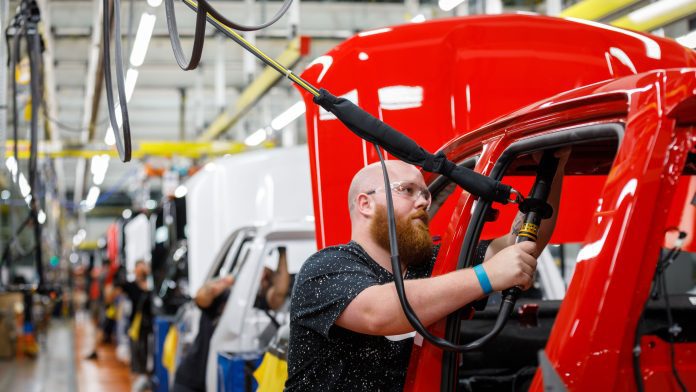President Donald Trump’s bold trade policy, including the 25% tariffs on automotive imports, is meant to bolster domestic production and reduce the nation’s reliance on foreign entities. At the end of 2024, roughly a quarter of U.S. auto assembly capacity remained unused. While automakers could shift production to the United States to avoid the tariffs without the need to build new plants, the situation is more complex and nuanced than it appears at face value.
Overall, U.S. plant utilization in 2024 was relatively healthy, hovering between 70% and 76%. Expanding manufacturing facilities would leave little room for automakers to pivot when an inevitable production challenge or market shift emerges. Lower-than-expected demand for electric vehicles has also weighed on some plant’s utilization, particularly those focused on EV production.
In addition, shifting overseas production to the U.S., particularly for low-demand vehicles, could prove costly and outweigh the benefits. Many U.S. assembly plants are possibly earmarked for next-generation models, and disrupting these long-term product plans would involve significant financial and logistical hurdles.
Factories are also specialized by vehicle size, powertrain, and product type, making it exceedingly challenging to flex production across different models without significant retooling investments. Supplier networks, often built around existing plants, would be difficult and time-consuming to realign to support new production locations.
However, despite the hesitation and the situation, several foreign automakers are already making adjustments to the new tariff policy. Hyundai recently pledged a $21 billion investment in the United States and recently celebrated the opening of its new Metaplant in Georgia, which is expected to produce roughly 300,000 vehicles annually and potentially expand to 500,000 in the future. Nissan will maintain a second shift for the Rogue at its Tennessee plant despite a previous decision to cut. On April 24, Audi CEO Gernot Döllner revealed that the company is nearing its decision to build its first U.S.-based factory soon.
Toyota, BMW, and Honda operate at over 80% capacity, leaving virtually no room for expansion. However, the Detroit Three have opportunities to expand their production footprint in the United States. Stellantis’ Warren Truck Assembly Plant, which builds Jeep Wagoneer and Grand Wagoneer, operated at only 17% of its capacity through the first quarter of 2025. Of the Detroit Three, Ford had the highest capacity utilization, yet its Flat Rock Assembly Plant currently runs on a single shift and has room to grow.
However, despite the potential to expand, the best-case scenarios will require a lengthy timeline to shift production. Until the long-term outlook on tariffs becomes clearer, most automakers are likely to hesitate before making costly and disruptive production shifts.



